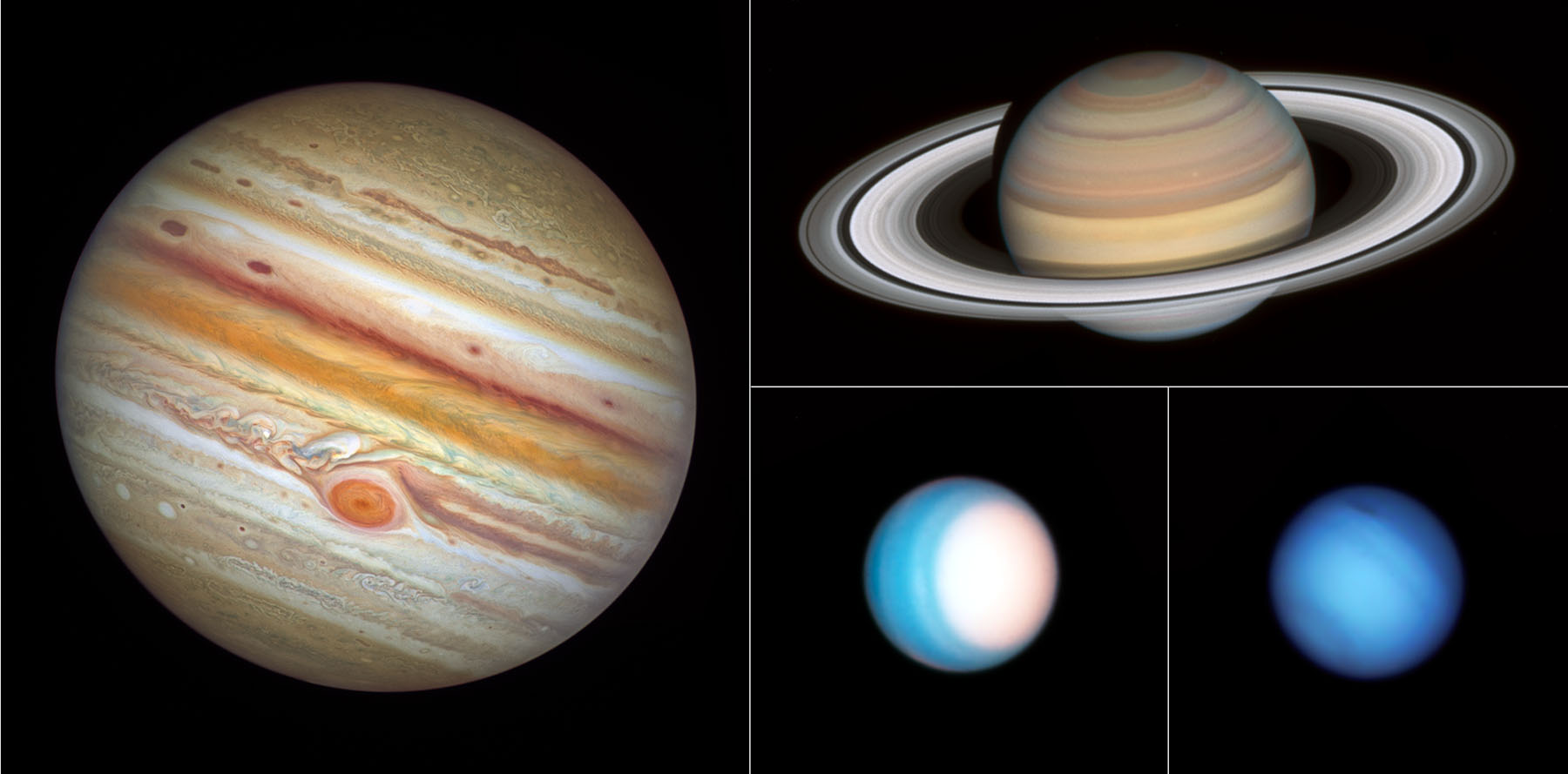STScI: Hubble’s Grand Tour of the Outer Solar System

CREDITS: SCIENCE: NASA, ESA, Amy Simon (NASA-GSFC), Michael H. Wong (UC Berkeley) IMAGE PROCESSING: Joseph DePasquale (STScI)
From its vantage point high above Earth’s atmosphere, NASA’s Hubble Space Telescope has completed this year’s grand tour of the outer solar system – returning crisp images that complement current and past observations from interplanetary spacecraft. This is the realm of the giant planets — Jupiter, Saturn, Uranus, and Neptune – extending as far as 30 times the distance between Earth and the Sun.
Unlike the rocky terrestrial planets like Earth and Mars that huddle close to the Sun’s warmth, these far-flung worlds are mostly composed of chilly gaseous soups of hydrogen, helium, ammonia, methane, and deep water around a packed, intensely hot, compact core.
Though robotic spacecraft have sent back snapshots of their visits to these four enormous planets over the past 50 years, their swirling, colorful atmospheres are constantly changing. While robotic spacecraft that fly close to the planets can take sharper images, Hubble frequently revisits these distant worlds to reveal new surprises, offering fresh insights into their wild weather, driven by still largely unknown dynamic forces working under the cloud tops.
Hubble’s snapshots of the outer planets reveal both extreme and subtle changes rapidly taking place in these distant worlds. Hubble’s sharp view gleans insights into the fascinating, dynamic weather patterns and seasons on these gas giants and allows astronomers to investigate the very similar—and very different—causes of their changing atmospheres.
These Hubble images are part of yearly maps of each planet taken as part of the Outer Planets Atmospheres Legacy program, or OPAL. The program provides annual, global views of the outer planets to look for changes in their storms, winds, and clouds. Hubble’s longevity, and unique vantage point, has given astronomers a unique chance to check in on the outer planets on a yearly basis. Knowledge from the OPAL program can also be extended far beyond our own solar system in the study of atmospheres of planets that orbit stars other than our Sun.
